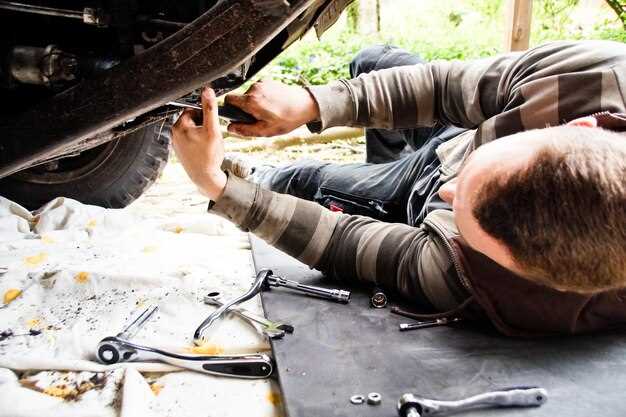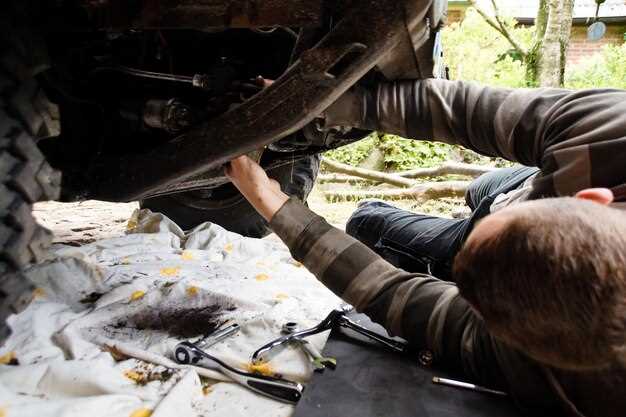
Steering problems on rough terrain can significantly impact vehicle performance and safety. When navigating uneven surfaces, such as dirt roads, rocky paths, or muddy tracks, drivers often encounter various problems that can jeopardize their ability to control the vehicle effectively. These issues may arise from a combination of environmental factors and mechanical failures, making it crucial to identify and address them promptly.
The complexities of steering systems can become more pronounced on challenging landscapes, where the demands on suspension and steering components are heightened. Mechanical wear and tear from constant exposure to harsh conditions can lead to misalignment, looseness, and even complete failure of critical parts. As a result, understanding how to repair these systems is essential for maintaining optimal performance and ensuring a safe driving experience.
Effective solutions for steering-related challenges on rough terrain often involve a meticulous approach to diagnostics and maintenance. By recognizing the symptoms of steering issues early on and implementing the right repair strategies, drivers can mitigate potential hazards and restore functionality. Proper adjustments, component replacements, and routine inspections play a key role in maintaining control and stability while tackling rugged environments.
Identifying Symptoms of Steering Control Issues

Proper steering control is crucial for safe and effective vehicle navigation, especially on rough terrain. Identifying symptoms of steering problems early can prevent costly repairs and ensure safety. Here are some common signs to look for:
1. Unresponsive Steering: If the steering wheel feels stiff or requires excessive effort to turn, it may indicate a problem with the steering system. This can affect your control over the vehicle, making it difficult to maneuver on uneven surfaces.
2. Unusual Noises: Listen for grinding, clunking, or squeaking sounds during steering maneuvers. These noises may suggest worn components or low power steering fluid, which could lead to more significant issues if left unchecked.
3. Uneven Wear on Tires: Inspect the tires for signs of uneven wear, which can indicate alignment issues stemming from steering problems. Poor tire alignment can negatively impact control, especially on bumpy terrain.
4. Vehicle Pulling: If the vehicle consistently pulls to one side while driving straight, this could be a sign of poor alignment or other steering control problems. This symptom requires immediate attention to avoid further damage and maintain control.
5. Vibration in the Steering Wheel: Excessive vibration when driving often points to issues within the steering system or suspension components. Such vibrations can compromise stability, making it essential to investigate the cause.
6. Steering Wheel Misalignment: If the steering wheel appears off-center while driving straight, this is an indication of a misalignment. Ignoring this symptom may result in more serious control issues.
Addressing these symptoms promptly can significantly improve steering performance and prevent the need for extensive repairs. Monitoring your vehicle’s behavior and responding to changes can enhance overall safety and maneuverability, particularly in challenging conditions.
Common Causes of Steering Failures in Off-Road Conditions
Off-road vehicles face unique challenges that often lead to steering failures. One of the primary causes is the lack of control resulting from uneven terrain. When driving over rocks, mud, or steep inclines, the steering system can become misaligned, causing difficulty in maintaining directional stability.
Another common issue arises from wear and tear on steering components, such as tie rods and joints. The harsh off-road environment can accelerate the deterioration of these parts, leading to potential steering malfunctions. Regular inspections and timely repairs are essential to ensure that these components remain functional.
Furthermore, inadequate tire pressure can severely impact steering performance on rough terrain. Under-inflated tires may cause sluggish response and hinder maneuverability. Ensuring that tires are properly inflated and suited for off-road conditions is crucial for maintaining effective steering control.
Lastly, foreign debris can obstruct the steering mechanism. Rocks, mud, and vegetation can infiltrate the steering system, causing jamming or damage. Regular cleaning and maintenance help mitigate these risks, ensuring the system remains responsive and reliable during off-road excursions.
Step-by-Step Guide to Steering System Repair and Maintenance

Maintaining a reliable steering system is crucial for safe navigation on rough terrain. Below is a comprehensive guide to address and repair common steering problems.
-
Inspection of System Components
Begin by inspecting all components of the steering system. Look for signs of wear and tear, such as:
- Damaged tie rods
- Worn-out steering gears
- Damaged control arms
- Leaks in hydraulic systems
-
Troubleshooting Steering Problems
Identify specific symptoms that indicate steering issues:
- Unresponsive steering wheel
- Noisy steering during turns
- Difficulty in maintaining control
-
Fluid Level Check
Low power steering fluid can lead to various problems. Check fluid levels and refill if necessary:
- Locate the power steering reservoir
- Check fluid level against the dipstick indicators
- Add the recommended fluid type as needed
-
Adjusting Steering Components
Make adjustments to ensure proper alignment and function:
- Adjust the toe alignment of the wheels
- Ensure that the steering wheel is centered
- Calibrate the steering rack to remove excess play
-
Replacing Worn Parts
Replace any components that show significant wear or damage:
- Remove the faulty parts following manufacturer specifications
- Install new or rebuilt components properly
- Ensure all connections are secure to prevent future issues
-
Final Testing
After maintenance, conduct a thorough test:
- Start the vehicle and check responsiveness of the steering
- Take the vehicle for a short drive on uneven terrain
- Listen for unusual noises and observe any handling problems
Regular maintenance and timely repairs will ensure your steering system functions effectively, enhancing control on rough terrain and improving overall safety.
 Skip to the content
Skip to the content 